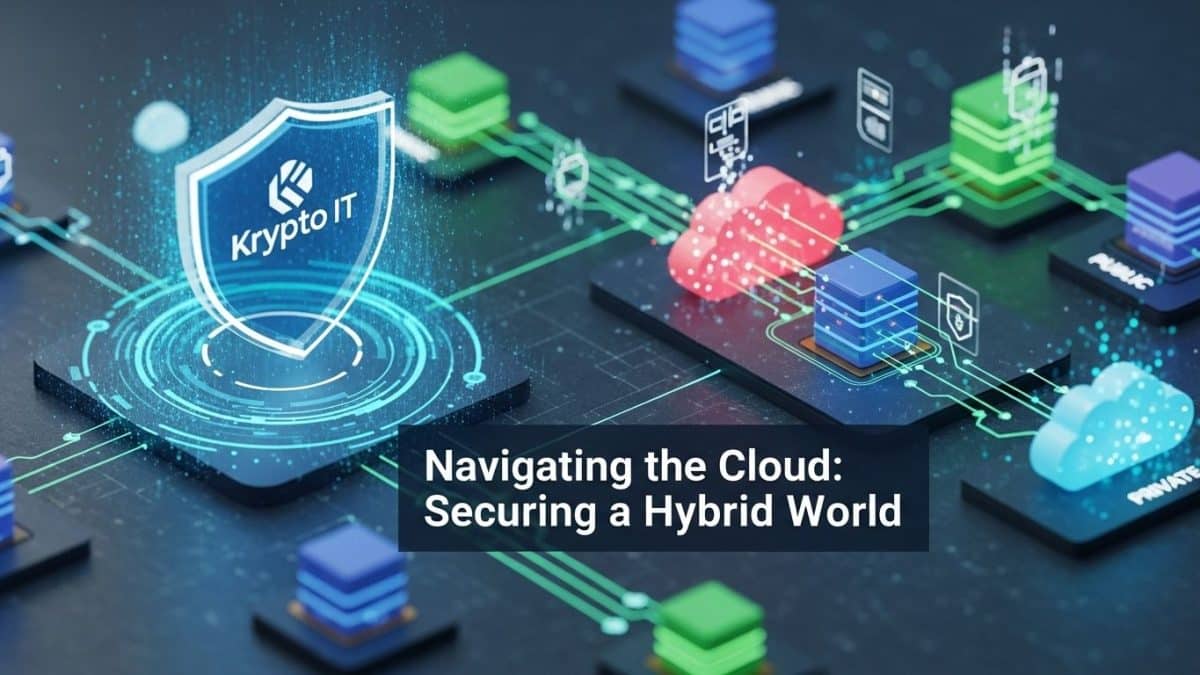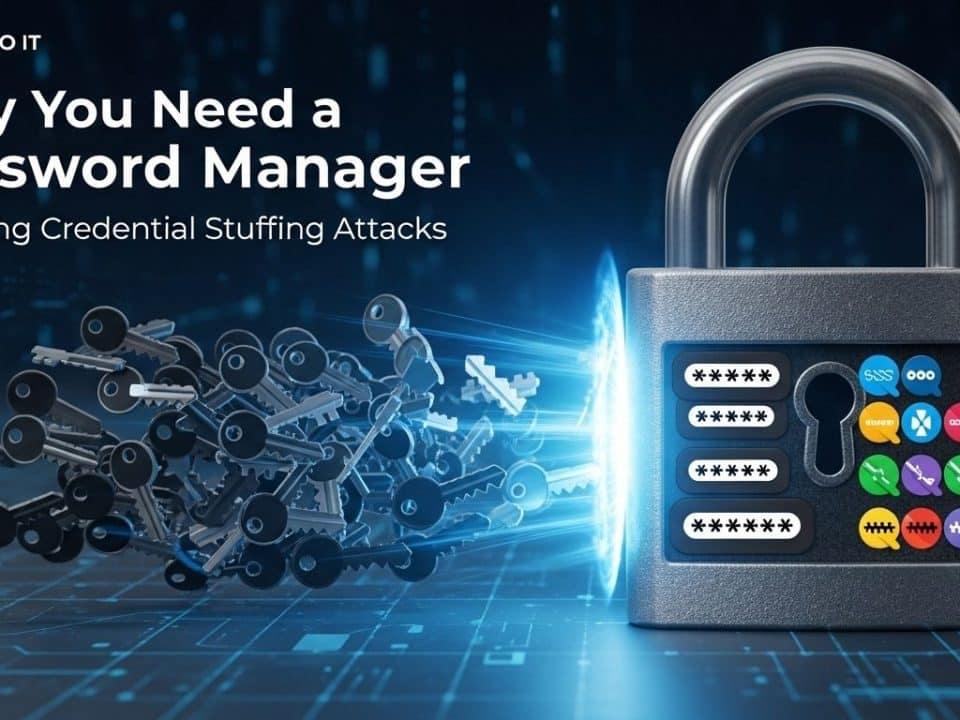
Beyond ‘Good Enough’: Security-First Networks
August 7, 2025
Network’s Secret Weapon: Secure DNS
August 11, 2025Your Network Perimeter Just Dissolved – Here’s How to Protect It
For countless Small and Medium-sized Businesses (SMBs) in Houston, the digital landscape has fundamentally changed. The days of a single, defined “network” confined to the four walls of your office are a thing of the past. Today, your network is a distributed, dynamic entity that spans your on-premises servers, your employees’ home offices, and a myriad of cloud services like Microsoft 365, Google Workspace, and CRM platforms. This interconnected reality is what we call a hybrid cloud environment.
While a hybrid cloud offers unparalleled flexibility and scalability, it also introduces a new, complex set of cybersecurity challenges. The traditional “castle-and-moat” security model—where you build a strong perimeter firewall and trust everything inside—is no longer viable. To protect your Houston business, you must rethink your security strategy and build a resilient framework that secures your network wherever it exists.
Why the Traditional Security Model Fails in a Hybrid World
The “good enough” security model of a simple firewall and on-premise defenses falls short in a hybrid environment for several key reasons:
- Blurred Perimeter: Your network is no longer a physical boundary. The perimeter is now everywhere your data and users are—in the public cloud, at an employee’s home, and on their personal devices. This creates a vastly extended attack surface that a single firewall cannot protect.
- Inconsistent Policies: It’s easy to have strong security policies for your on-premises servers but neglect the security configurations of your cloud applications. This creates a dangerous gap where a misconfigured cloud service can become a backdoor into your entire network.
- Visibility Gaps: Without a centralized management and monitoring solution, it’s difficult to gain a clear, unified view of threats and activity across both your on-premises and cloud environments. An attacker who gains a foothold in one area can go completely undetected while moving laterally to another.
- IAM Complexity: Managing user identities and access across multiple platforms and services becomes incredibly complex. Who has access to what, and from where? In a decentralized environment, this can lead to over-privileged accounts, a major vulnerability.
- Data in Motion: In a hybrid cloud, data is constantly moving between your on-premises systems and the cloud. This data in transit is vulnerable to interception and man-in-the-middle attacks if not properly encrypted and monitored.
A New Security Paradigm: Zero Trust and Centralized IAM
Securing a hybrid cloud requires a shift from a perimeter-based approach to a new security paradigm that centers on identity and continuous verification.
- Embrace Zero Trust Architecture: The core principle of Zero Trust is to “never trust, always verify.” It assumes that every user, device, and application—whether inside or outside your network—is a potential threat until proven otherwise. For a hybrid cloud, this means:
- Verify Explicitly: Verify every access request based on all available data points, including user identity, device health, location, and the data being requested.
- Use Least Privilege Access: Grant users and devices only the minimum access they need to do their jobs.
- Microsegmentation: Divide your network into smaller, isolated zones. This contains a breach to a single segment and prevents lateral movement.
- Encrypt Everything: Encrypt all data, both in transit between your environments and at rest in your servers and cloud storage.
- Centralize Identity and Access Management (IAM): In a hybrid world, identity is your new security perimeter. You need a single, unified platform to manage who has access to what.
- Single Sign-On (SSO): Use SSO to allow employees to use one set of credentials to securely access all their applications, both on-premises and in the cloud.
- Mandatory Multi-Factor Authentication (MFA): This is non-negotiable. MFA is the single most effective defense against credential theft, which is a primary attack vector in a hybrid environment.
- Role-Based Access Control (RBAC): Use RBAC to streamline permissions, ensuring users are only granted the access they need based on their job functions.
Advanced Tools for Hybrid Cloud Defense
Beyond these foundational principles, modern security tools are essential for securing a hybrid environment:
- Cloud Access Security Broker (CASB): Think of a CASB as a security intermediary that sits between your users and cloud services. It provides critical visibility into what cloud applications your employees are using (sanctioned and “Shadow IT”), enforces security policies (e.g., preventing sensitive data from being uploaded to unsanctioned cloud storage), and helps ensure compliance.
- Data Loss Prevention (DLP): DLP tools monitor, detect, and block the unauthorized movement of sensitive data, whether it’s leaving your on-premises network or being transferred between your cloud services.
- Unified Security Monitoring: A centralized platform (like a SIEM or XDR solution) that collects and analyzes security logs from all your environments—on-premises, public cloud, and SaaS applications. This gives you a single, clear view of potential threats and helps you quickly identify and respond to incidents.
Taking the First Steps: A Guide for Houston SMBs
Securing a hybrid cloud environment might seem daunting, but you can start with a few simple steps:
- Assess Your Current Posture: Identify all your on-premises systems and cloud applications. Document who has access to what and where your sensitive data is stored.
- Enforce MFA: Make MFA mandatory for every single employee on all cloud services (Microsoft 365, Google Workspace, etc.) and remote access points.
- Implement Segmentation: Start with the basics. Create an isolated guest Wi-Fi network and a separate network for your servers.
- Educate Your Team: Provide regular security awareness training that focuses on the unique risks of remote work and cloud-based applications.
- Seek Expert Guidance: Partner with a trusted cybersecurity provider like Krypto IT, based right here in Houston. We specialize in helping SMBs navigate the complexities of hybrid cloud security, implementing tailored solutions that are both effective and manageable.
The hybrid cloud is here to stay. Don’t let your security strategy be a relic of the past. Krypto IT is committed to helping Houston businesses build a resilient, security-first foundation for the future.
Contact us today to schedule a free consultation and ensure your network is secure, no matter where it is.




